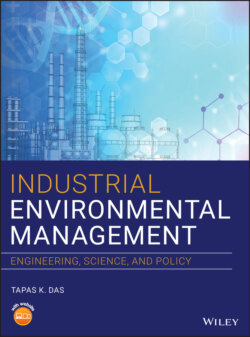Читать книгу Industrial Environmental Management - Tapas K. Das - Страница 63
2.3.3 Population Growth
Оглавление“The Earth is finite and world population is finite.” Every new born consumes plenty of natural and nonnatural products, which are also ultimately provided after utilizing natural resources. Thus, every birth increases the consumption of natural resources. But the fact is a finite world can support only a finite population. In other words, natural resources shrink as people multiply. The current world population is 7.73 billion as of August 2019 according to the most recent United Nations estimates elaborated by Worldometers. The world's population has grown almost sixfold in this century (Figure 2.1). India alone has about 17% population of the world land area. This rise in urban population is at a very high rate. It indicates an increasing demand for fuel, food, pollution free clean water and air, space to live in, and healthy conditions. Increasing population in urban areas has created the problem of land, air, and water pollution, and unsanitary conditions that all cumulatively adversely affecting the quality of life. Some big cities are rated as choked cities due to polluting industries around them. Continuous rise in urban population has enhanced the density of population in various areas which has also created various social, physical, and psychological problems for people. These high‐density populated areas have also resulted in deforestation and disappearance of vegetation cover, which is only 11% of the total area against 33% which is essential. Increasing population also results in poverty which is also a cause of pollution.
